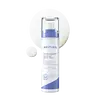What's inside
What's inside
 Key Ingredients
Key Ingredients

 Benefits
Benefits

 Concerns
Concerns

No concerns
 Ingredients Side-by-side
Ingredients Side-by-side

Rosa Damascena Flower Water
MaskingButylene Glycol
HumectantDipropylene Glycol
HumectantGlycerin
HumectantWater
Skin ConditioningNiacinamide
SmoothingPropanediol
SolventPentylene Glycol
Skin ConditioningCeteareth-12
EmulsifyingCholeth-24
EmulsifyingGlyceryl Stearate
EmollientHydrolyzed Jojoba Esters
Skin ConditioningPolyglyceryl-2 Oleate
EmulsifyingCeteareth-20
CleansingCetearyl Alcohol
EmollientCetearyl Isononanoate
EmollientCetyl Palmitate
EmollientNelumbo Nucifera Flower Extract
Skin ConditioningPrunus Mume Fruit Extract
HumectantEthylhexylglycerin
Skin ConditioningDisodium EDTA
Carbomer
Emulsion StabilisingGlycine Soja Seed Extract
Skin ConditioningCitrus Aurantium Dulcis Peel Oil
MaskingCitrus Nobilis Peel Oil
Masking1,2-Hexanediol
Skin ConditioningOctanediol
Tromethamine
BufferingCananga Odorata Flower Oil
MaskingCitrus Aurantium Amara Peel Oil
Skin ConditioningCitrus Reticulata Leaf Oil
MaskingHelianthus Annuus Seed Oil Unsaponifiables
EmollientSimmondsia Chinensis Seed Oil
EmollientSodium Hyaluronate
HumectantXylitylglucoside
HumectantAnhydroxylitol
HumectantCaprylic/Capric Triglyceride
MaskingXylitol
HumectantHydrogenated Lecithin
EmulsifyingGlucose
HumectantGlycine
BufferingSerine
MaskingGlutamic Acid
HumectantCeramide NP
Skin ConditioningHydrolyzed Collagen
EmollientAspartic Acid
MaskingLeucine
Skin ConditioningAlanine
MaskingLysine
Skin ConditioningArginine
MaskingTyrosine
MaskingPhenylalanine
MaskingProline
Skin ConditioningThreonine
Valine
MaskingIsoleucine
Skin ConditioningHistidine
HumectantCysteine
AntioxidantMethionine
Skin ConditioningRosa Damascena Flower Water, Butylene Glycol, Dipropylene Glycol, Glycerin, Water, Niacinamide, Propanediol, Pentylene Glycol, Ceteareth-12, Choleth-24, Glyceryl Stearate, Hydrolyzed Jojoba Esters, Polyglyceryl-2 Oleate, Ceteareth-20, Cetearyl Alcohol, Cetearyl Isononanoate, Cetyl Palmitate, Nelumbo Nucifera Flower Extract, Prunus Mume Fruit Extract, Ethylhexylglycerin, Disodium EDTA, Carbomer, Glycine Soja Seed Extract, Citrus Aurantium Dulcis Peel Oil, Citrus Nobilis Peel Oil, 1,2-Hexanediol, Octanediol, Tromethamine, Cananga Odorata Flower Oil, Citrus Aurantium Amara Peel Oil, Citrus Reticulata Leaf Oil, Helianthus Annuus Seed Oil Unsaponifiables, Simmondsia Chinensis Seed Oil, Sodium Hyaluronate, Xylitylglucoside, Anhydroxylitol, Caprylic/Capric Triglyceride, Xylitol, Hydrogenated Lecithin, Glucose, Glycine, Serine, Glutamic Acid, Ceramide NP, Hydrolyzed Collagen, Aspartic Acid, Leucine, Alanine, Lysine, Arginine, Tyrosine, Phenylalanine, Proline, Threonine, Valine, Isoleucine, Histidine, Cysteine, Methionine
Water
Skin ConditioningGlycerin
HumectantButylene Glycol
HumectantCaprylic/Capric Triglyceride
MaskingHydrogenated Poly(C6-14 Olefin)
EmollientDimethicone
EmollientCetyl Ethylhexanoate
EmollientHydroxypropyl Bislauramide Mea
Emollient1,2-Hexanediol
Skin ConditioningSodium Surfactin
CleansingCholesterol
EmollientGlyceryl Caprylate
EmollientDisodium EDTA
Ethylhexylglycerin
Skin ConditioningBehenic Acid
CleansingTocopherol
Antioxidant
 Reviews
Reviews

Ingredients Explained
These ingredients are found in both products.
Ingredients higher up in an ingredient list are typically present in a larger amount.
1,2-Hexanediol is a synthetic liquid and another multi-functional powerhouse.
It is a:
- Humectant, drawing moisture into the skin
- Emollient, helping to soften skin
- Solvent, dispersing and stabilizing formulas
- Preservative booster, enhancing the antimicrobial activity of other preservatives
Butylene Glycol (or BG) is used within cosmetic products for a few different reasons:
Overall, Butylene Glycol is a safe and well-rounded ingredient that works well with other ingredients.
Though this ingredient works well with most skin types, some people with sensitive skin may experience a reaction such as allergic rashes, closed comedones, or itchiness.
Learn more about Butylene GlycolThis ingredient is an emollient, solvent, and texture enhancer. It is considered a skin-softener by helping the skin prevent moisture loss.
It helps thicken a product's formula and makes it easier to spread by dissolving clumping compounds.
Caprylic Triglyceride is made by combining glycerin with coconut oil, forming a clear liquid.
While there is an assumption Caprylic Triglyceride can clog pores due to it being derived from coconut oil, there is no research supporting this.
Learn more about Caprylic/Capric TriglycerideDisodium EDTA plays a role in making products more stable by aiding other preservatives.
It is a chelating agent, meaning it neutralizes metal ions that may be found in a product.
Disodium EDTA is a salt of edetic acid and is found to be safe in cosmetic ingredients.
Learn more about Disodium EDTAEthylhexylglycerin (we can't pronounce this either) is commonly used as a preservative and skin softener. It is derived from glyceryl.
You might see Ethylhexylglycerin often paired with other preservatives such as phenoxyethanol. Ethylhexylglycerin has been found to increase the effectiveness of these other preservatives.
Glycerin is already naturally found in your skin. It helps moisturize and protect your skin.
A study from 2016 found glycerin to be more effective as a humectant than AHAs and hyaluronic acid.
As a humectant, it helps the skin stay hydrated by pulling moisture to your skin. The low molecular weight of glycerin allows it to pull moisture into the deeper layers of your skin.
Hydrated skin improves your skin barrier; Your skin barrier helps protect against irritants and bacteria.
Glycerin has also been found to have antimicrobial and antiviral properties. Due to these properties, glycerin is often used in wound and burn treatments.
In cosmetics, glycerin is usually derived from plants such as soybean or palm. However, it can also be sourced from animals, such as tallow or animal fat.
This ingredient is organic, colorless, odorless, and non-toxic.
Glycerin is the name for this ingredient in American English. British English uses Glycerol/Glycerine.
Learn more about GlycerinWater. It's the most common cosmetic ingredient of all. You'll usually see it at the top of ingredient lists, meaning that it makes up the largest part of the product.
So why is it so popular? Water most often acts as a solvent - this means that it helps dissolve other ingredients into the formulation.
You'll also recognize water as that liquid we all need to stay alive. If you see this, drink a glass of water. Stay hydrated!
Learn more about Water